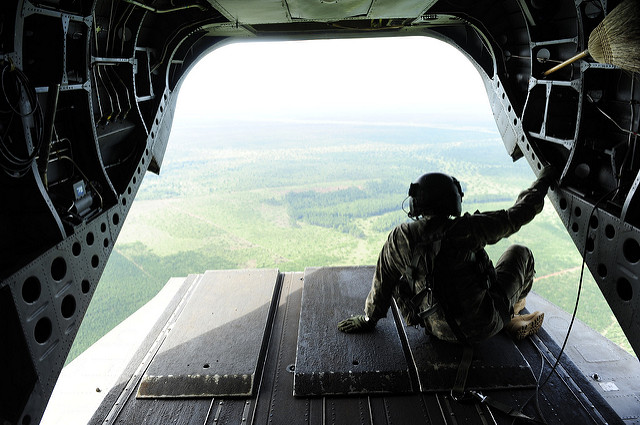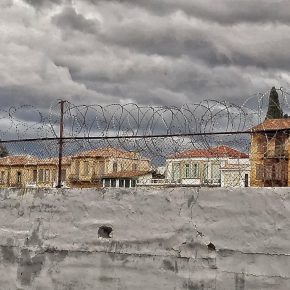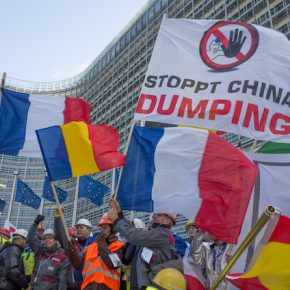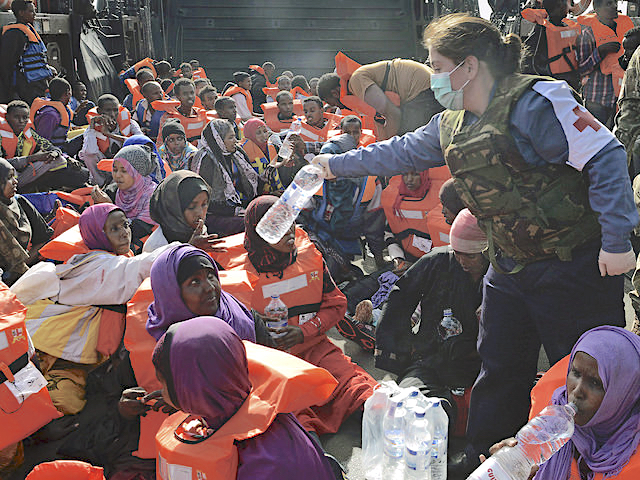Remember the funeral of Nelson Mandela, Barack Obama stood before the South African people to pay tribute to Madiba. “He makes me want to be a better man”, the American president confided with his audience. It felt like he had just wandered astray from the official script. But really it was very well choreographed.
By this point, Africa has become a major focus of American counter-terror efforts. At the same time, US dominance has not gone unchallenged, Chinese competition has meant African governments have more than one economic titan to do business with. In some ways this takes Africa back to the Cold War struggles, when the Soviet Union and Cuba often vied with the US and China for influence.
In the years since the Cold War ended, the politics of Africa has been dominated by the ‘war on terror’, neoliberal globalisation and Chinese state capitalism. These factors remain key for understanding US policy towards the continent today. The Obama administration has built on the existing pretexts for war in Africa and extended the Western scope of military operations.
One of the key events of the Obama era was the NATO intervention in Libya. The Libyan uprising against Colonel Gaddafi created an opening for the Western powers to intervene. Yet the Libyan rebel leaders opposed greater Western interference. The country has since slipped into a strange limbo, with no one power able to hold the state. And this laid the groundwork for new conflicts.
Africa’s War on Terror
Let’s look at Mali in 2012. Returning from the Libyan civil war, heavily armed Tuareg fighters waged a new rebellion in the West African Muslim state. The aim was to establish Azawad as an independent country for the Tuareg people. As the insurgency progressed, radical Islamist groups like Ansar Dine rushed in to take advantage of the conflict. Once Azawad declared independence, the Malian government was ousted in a coup d’etat by US-trained army officers.
With US-backing, France invaded Mali in 2013 to defeat the Islamists and secure the nation-state, however, the problem manifested by the destruction of Timbuktu was not contained to one area. The French soon found themselves expanding their operations across the region. The jihadi groups began targeting hotels in Burkina Faso and Cote d’Ivoire – especially those frequented by Westerners – to stretch the operation further and eventually break its back.
To this day, the US is backing the French intervention in West Africa and the Sahel to stamp out the rise of jihadi groups. Of course, the less convenient story is that the French can secure their economic presence in the region by extending a ‘defensive umbrella’ through West Africa. France is heavily dependent on nuclear power, and the Sahel region is rich with uranium. It’s also the case that the French want to fend-off Chinese mining interests.
The US is happy to see France beat China for Niger’s uranium. This is where counter-terrorism meets US and Chinese competition. In the past, French Africa was in competition with Anglophone Africa, but this changed in the last couple of decades. France and Britain are now on the same side in Africa, namely the American side. Thus, the NATO bombing of Libya was a joint operation.
Today Libya has no government, while three governments claim this status real power is held by armed groups. African refugees pass through in hope of making the perilous journey from the Libyan coast to the shores of Italy. This is the situation that concerns the EU and the US. Obama has acknowledged the NATO bombing failed. He placed the blame on Britain and France for their lack of “follow-up”.
Great Power Play
Although it is sometimes claimed that the Gaddafi regime was ousted because it was opposed to AFRICOM, the Libyan regime was open with AFRICOM. This was long before the American military force established relations with almost every African state. The idea of hosting US troops on Libyan soil was anathema, as it remains for most Africans. By contrast, the rebels in Benghazi opposed AFRICOM as Louis Proyect pointed out some years ago.
Since then the Obama administration has continued to expand AFRICOM and deepen its reach on the continent. In 2015, Obama planted a new US base in Cameroon to launch drones and station 300 troops. Note Cameroon is just next door to Nigeria and faces incursions from the Boko Haram insurgency. Obviously, the US wants to contain the Islamist insurgency in northeastern Nigeria and stand behind its regional allies.
Yet the US would rather not arm Nigerian soldiers directly. Instead, the conflict in northeastern Nigeria is used as a pretext to extend the US reach in West Africa. The US and its allies provide funding for the regional task force. Economically, the US remains close to Nigeria and the Gulf of Guinea for oil, as do the other Western powers, though these interests fall out of sight through the counter-terror prism.
This is no coincidence. The Bush administration created AFRICOM after having established a major base in Djibouti as part of its ‘war on terror’. From Djibouti, 10,000 American troops can oversee world trade flows through the Bab-el-Mandeb heading up to the Suez Canal. The Horn of Africa, the Gulf of Aden and the Arabian Peninsula are all within reach from this vantage point. But even here the US is not unchallenged.
China is opening a massive base in Djibouti. It will station 10,000 Chinese troops in the tiny country, rivaling the American presence at its height. The Chinese government also wants to open a base in Namibia on the over side of the continent. This would give China a great strategic advantage. Just as China is challenging the US in Africa, the Americans are encircling China in the Pacific. These may be the dark clouds coming over the horizon, as the real storm approaches.
The US in Somalia
All of this is going on as the US continues to try to create a client government in Somalia. The official pretext is, once again, fighting the terror of al-Shabaab. The AU-backed government in Mogadishu is treated as the only legitimate authority in the country. But there is a problem with this. Regions like Galmudug, Puntland and Somaliland, basically govern themselves. The Somali federal government was established by southern warlords and an Ethiopian invasion.
On Obama’s watch, the US has repeatedly bombed Somali targets with drones. Key US allies Rwanda and Uganda were providing ground troops to mop up resistance. Much to its own detriment, Kenya joined the occupation of Somalia in 2011. Al-Shabaab has struck back at Uganda with the Kampala bombings of 2010 and Kenya with the Westgate mall siege in 2013 and the 2015 massacre of Garissa University students.
None of this has seen the Kenyan government to question its role in Somalia. For example, when al-Shabaab attacked a Kenyan AU base possibly killing more than 200 soldiers, the Kenyan government refused to publish the official body count. In response, US drones targeted al-Shabaab and killed over 150 people in one operation. This pattern will likely continue for years to come.
Ten years of AMISOM has not left Somalia with a stable, federal government. The US needs a reliable ally on the Horn of Africa, while Ethiopia and Kenya have an interest in keeping Somalia fragmented. Both countries have restive Muslim populations and contested borders with Somalia. In the 1960s, Somali bandits rampaged across the Kenyan border and later General Said Barre would wage war on Ethiopia laying claim to the Ogaden desert.
Fast forward to 2006, Ethiopia invades Somalia with US approval to smash the Islamic Courts Union. AMISOM is set up to foster a new government in Mogadishu, backed by warlords and composed of former Puntland rebels. Al-Shabaab emerges soon after to challenge the AU forces occupying the country. Much like Afghanistan, Obama passes Somalia on to his successor. This saga looks set to continue with no end in sight.
Photography courtesy of US Army Africa. Published under a Creative Commons license.





